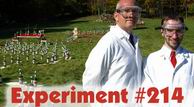
Above is a picture I recently took in one of my journeys in the virtual world Second Life. Well no, not exactly, its a picture I took on one of my frequent walks around Sharon Woods Park. That's an element of my first life. In my Second Life I have been doing some exploring as well. Inspired by a number of recent articles about businesses using Second Life (SL). I have taken a deeper dive.
Virtual worlds are not new. In the 90s we talked to a company called Blaxxun, which still exists. They tried to get us to advertise in their world and a number of well known companies did. But for a number of reasons, including underpowered computers and uncommon broadband, it did not succeed.
Now SL appears to be succeeding. A million members, over ten thousand online at any time. A half million US dollars being spent in every 24 hours. Just spend some time at orientation island and watch the folks arrive. So whats it about? A visual augmentation of chat, a way to collaborate, a way to shop in new ways. Edward Castronova
recent explored the economics of virtual worlds. His take is that the economics is exploding.
What businesses exist in SL? Publicly IBM, Addidas, Nissan and Reuters are just some examples. And there are hundreds of other that largely deal only in virtual goods.
Dell just opened a space that consists of a number of islands. There you can design your own PC or laptop and have it delivered to your (physical) world. I visited it and spent some time looking at their wares. Like most Second Life spaces Dell is an austere world. Lots of sharp angles, no green space. Lots of vertical design that has you flying and bumping your head. Kiosks are all around that seek to interview you about your computing needs, a project with the University of Innsbruck. I thought that was interesting but the actual questioning was pretty cold, like the space itself. You can seek a map to see how many people are sharing the space with you. In the hour I was there there were only a handful at any one time, and most of them teleported away soon after arriving. I talked briefly to two people ... the lack of clues as to who people are ... young, old ... professional, tourist ... even male, female is unnerving to me, you have to do quite a bit of typing to establish any context. Almost too easy to disengage, no notion of investment or depth, just teleport away. No Dell reps that I could see, perhaps that would make sense to humanize the space. In fact I found emptyness to be common in commercial spaces. Even IBM's much touted Almaden space was empty when I arrived. A few spaces had signs warning that if someone said they represented a space, they were frauds.
You can zoom out in the map and see roughly how many people are in what island. Most of the ten thousand or so were in places where people could interact socially, in every sense of that word.
So what is my take? I am less skeptical than I was previously. It is yet another reason to sit on your butt for long periods. And we certainly have enough excuses for that now. Its not a game but a social experience addictive for some. My hard-boiled retailer wife took one look and shook her head. There is even recent
unrest in the world. More
commentary on that. Not for the socially squeamish. Many spaces are depressingly austere. Still worth understanding in some detail, My explorations continue.










